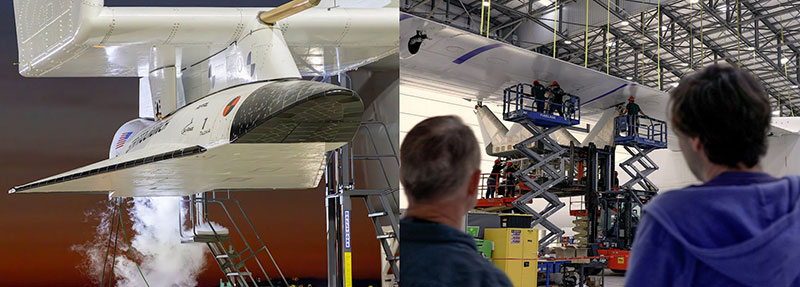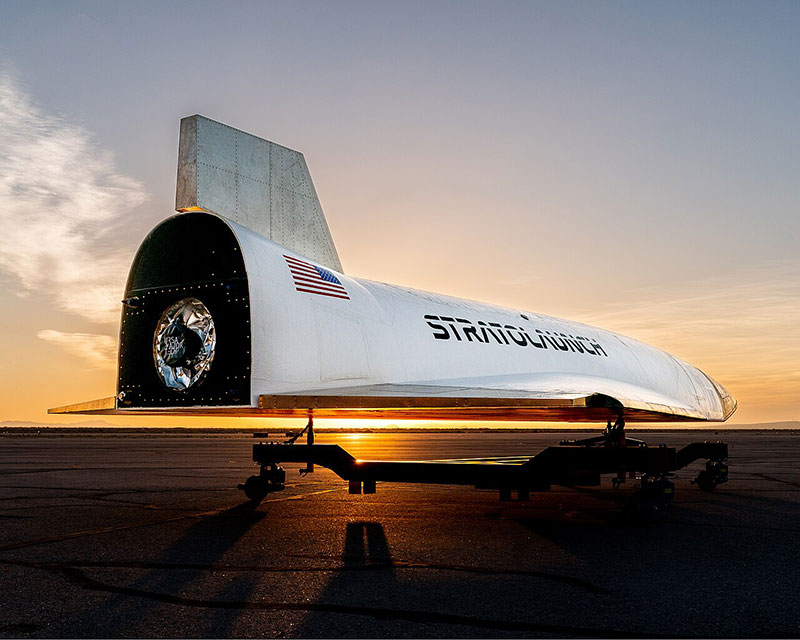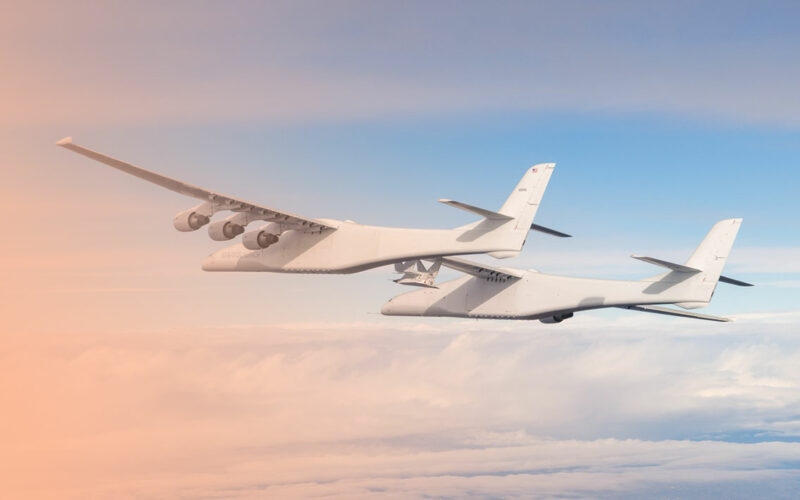In a world where aerospace milestones are commemorated like the footprints on the moon, the sudden quiet surrounding Stratolaunch Systems seems almost deafening.
Once heralded as a behemoth set to redefine space launch, its soaring ambitions have since been shrouded in mystery. You’re here because you’ve asked, “What happened to Stratolaunch?” and the silence has piqued your curiosity.
Through this in-depth exploration, uncover the layers of triumphs and tribulations that this Paul Allen legacy has navigated.
This article will project the trajectory of the world’s largest airplane by wingspan and its envisioned role within the commercial spaceflight sector.
Dissecting the Stratolaunch narrative, from inception to its current status in a competitive industry, offers insights beyond mere updates.
By article’s end, anticipate a comprehensive understanding of Stratolaunch’s progress—and its implication in the ongoing saga of human-led space exploration.
Strap in as we embark on an investigative journey through the life of an aerospace innovator, piercing through the clouds of uncertainty.
What Happened To Stratolaunch?
Stratolaunch, the aerospace company founded by Microsoft co-founder Paul Allen, has undergone significant changes since its inception. After Allen’s death in 2018, the company was acquired by Cerberus Capital Management and shifted its focus from launching satellites and spacecraft into orbit to developing hypersonic vehicles.
The company’s flagship project, the Stratolaunch aircraft, is the world’s largest aircraft with a wingspan of 385 feet (117 meters). It was designed to carry rockets between its twin-fuselages and launch them into outer space at high altitudes. The aircraft successfully completed a test flight in April 2019, reaching an altitude of 17,000 feet and a maximum speed of 189 miles-per-hour.
The Ambitious Mission
Goals for Spaceflight

The goal was clear: make space access something regular folks could think about.
This wasn’t just about sending up satellites on the cheap; it was about revolutionizing the way we think about getting to space.
Low-Cost, Flexible Access to Space
Low-cost and flexible don’t usually hang out in the same sentence as space access.
But that was the point. Stratolaunch was shaking up the status quo. The dream was to turn space launches on their head, making them more like catching a red-eye to a different continent than mounting a moonshot.
The Air-Launch System’s Potential to Change Space Launches
Air-launch wasn’t new, but doing it on this scale? That was groundbreaking.
The idea was to carry rockets up on the Roc, way above most of the Earth’s atmosphere, and then – bam! – launch them into space.
It was a game-changer. No more being tied down to launch pads and perfect weather windows. This was space access with wings.
The Initial Successes
So, what happened to Stratolaunch after all this hype? Did they just talk a big game, or did they deliver?
Turns out, they weren’t just blowing smoke.
The First and Second Test Flights
They took the Roc out for a spin, not once, but twice. And guess what? It soared. Literally.
The world’s largest plane took to the skies, and people took notice. It wasn’t just a test; it was a statement.
Public and Industry Reactions to the Early Achievements
And how did the public and the industry react? With dropped jaws and wide eyes, mostly.
Here was this behemoth of a plane, defying expectations and gravity. It was a glimpse into what the future of space access could look like, and people were here for it.
The Turning Point
Paul Allen’s Death and Its Impact
Life, uh, finds a way to throw curveballs. And for Stratolaunch, that curveball was losing its MVP, Paul Allen.
When the news hit, it was like a gut punch to the team. Paul wasn’t just the money guy; he was the heart and soul of the mission. With him gone, people started asking, “What happened to Stratolaunch now?”
The Company’s Uncertain Future Post-Founder’s Demise
Talk about walking into a fog with no flashlight. The company was left in the lurch, with big dreams but no dreamer to lead the charge.
The space venture that was poised to flip the script on space access suddenly looked like it might not even make it to the next chapter.
The Will of Paul Allen and the Absence of Stratolaunch
It’s like Paul Allen left behind a map to a treasure chest, but no one could find the “X” marking the spot.
His vision was clear, but without him, the company struggled to keep the ship steady. Questions buzzed around like pesky flies – would Stratolaunch become just another “what could’ve been” story?
Downsizing and Strategy Shift
So, what’s a company to do when they’re down but not out? They tighten the belt and shift gears.
Reduction to a Skeleton Crew
The team went from a bustling hub of dreamers and engineers to a skeleton crew.
It was all hands on deck, but with fewer hands. It felt like trying to bail water out of a sinking ship with a teacup. But hey, teacup or not, they weren’t about to let the dream drown without a fight.
Focus Shift from a Family of Rockets to the Pegasus XL
Plan B was the Pegasus XL. It was like pivoting from building a whole circus to just mastering one trick – but making sure it was a heck of a trick.
The focus narrowed, and the mission got crystal clear. Sometimes, less is more, right?
Challenges and Competition
Market Dynamics
The space arena is no kiddie playground. It’s more like a gladiator arena, and new challengers were stepping in.
The Rise of SpaceX and Other Competitors

SpaceX wasn’t just a competitor; it was the 800-pound gorilla in the room.
It’s tough to play David when Goliath is launching rockets like it’s going out of style. And it wasn’t just SpaceX; the skies were getting crowded with companies vying for their piece of the starry pie.
The Economic Challenge of Competing Launch Costs
Dollar bills, y’all. That’s what it boiled down to.
Launch costs were like a high-stakes poker game, and Stratolaunch needed to keep its chips on the table. They were playing the long game, but the stakes were getting higher, and the pot was growing.
Operational and Financial Hurdles
So, what’s a company to do when the odds are stacked? Dig deep and push on.
The Struggle Without Allen’s Financial Backing
No Paul Allen meant no financial safety net. Every penny counted, and every setback felt like a mountain to climb. It was like trying to fill a bucket with a hole in it – a frustrating, uphill battle.
The Difficulty of Sustaining Operations and Achieving Certification
And let’s not even get started on the red tape. Achieving certification for space stuff is no walk in the park. It’s more like a hike up Everest, blindfolded, during a snowstorm. But, despite the hurdles, the dream wasn’t dead.
FAQ On What Happened To Stratolaunch
Is Stratolaunch Still in Operation?
Absolutely, Stratolaunch is not just a relic of a bygone era but an ongoing concern. Despite rumors implying otherwise, the aerospace company continues to work on the air-launch platform, steadily edging closer to its goal of revolutionizing access to low Earth orbit.
What Happened to the Stratolaunch Airplane?
It’s out there, living up to its moniker, the Roc carrier aircraft. After a period of uncertainty post its maiden flight, the aircraft is undergoing continual testing aimed at honing its capabilities as a dependable satellite deployment system.
Has Stratolaunch Abandoned Its Space Goals?
Far from it—Stratolaunch Systems has simply pivoted, refocusing on a pragmatic approach that involves launching hypersonic vehicles. Their mission update suggests a redefined strategy better aligned with the market’s present demands.
Who Owns Stratolaunch Now?
Ownership transitioned post the passing of Paul Allen. The Allen estate held the reins temporarily until an undisclosed buyer took over in 2019. It’s rumored that this buyer has a fortified interest in seeing Stratolaunch soar to new heights in space transportation.
What is the Current Mission of Stratolaunch?
The emphasis now is on using the Roc aircraft as a mobile launch system for hypersonic flight testing. This strategic shift places Stratolaunch at the vanguard of providing aerospace testing platforms, significantly reducing costs and complexities associated with ground launches.
Are There Any Planned Stratolaunch Flights?

Indeed, the company schedules continual test flights of the Roc—each step is a leap towards operational readiness. Specifically, these tests are precursors to the main event: launching the Talon-A, a hypersonic vehicle poised to advance high-speed travel.
What Makes Stratolaunch Unique in the Aerospace Industry?
The dual fuselage of the Roc stands unmatched in wingspan—the behemoth of the skies. Also, the mobility of an airborne Pegasus rocket provider offers singular flexibility compared to traditional ground-launched systems.
How Does Stratolaunch Contribute to Commercial Spaceflight?
By providing a mobile, versatile launch pad in the skies, Stratolaunch is democratizing space launch services. This contribution accelerates the market, inviting more players into the realm of satellite and possibly even human space travel.
What Challenges Has Stratolaunch Faced?
From the loss of its visionary founder, Paul G. Allen, to market flux and technical hurdles, the journey hasn’t been free of turbulence. Yet, it’s the surmounting of these very challenges that underscores Stratolaunch’s progress and resilient spirit.
Will Stratolaunch Venture Into Space Tourism?
While it’s a scalding-hot market, space tourism does not feature in current Stratolaunch ambitions. Their eyes are set squarely on the satellite launch and hypersonic flight testing services, a niche that promises enough sky for growth.
Conclusion
As the tale unfolds, the query — what happened to Stratolaunch — transforms from a whisper of the past to the clarion call of tomorrow’s promise. We’ve navigated through the company’s evolving aspirations, the technological symphony of the Roc carrier aircraft, and the persistent quest to revolutionize satellite deployments and hypersonic flight capabilities.
The journey of Stratolaunch is a testament to adaptation within the unforgiving frontiers of space innovation. Emerging stronger from the void left by Paul Allen’s passing and market volatilities, the entity stands poised on the runway to the heavens, engines of potentiality roaring with might.
In conclusion, the Stratolaunch narrative is not one to be archived prematurely. Rather, it’s a continuously unfolding epic etched in the blueprint of tomorrow’s aerospace achievements. Eyes skyward, let’s witness as this colossal dream weaver charts its course through the stratosphere, cleaving the air with wings of ambition and a tailwind of renewed purpose.
- Benefits of Working with a Professional Web Development Company For Your Website - April 29, 2024
- What’s Odoo ERP And How To Integrate It - April 29, 2024
- Design Collaboratively: UX/UI Apps Like Figma - April 28, 2024









